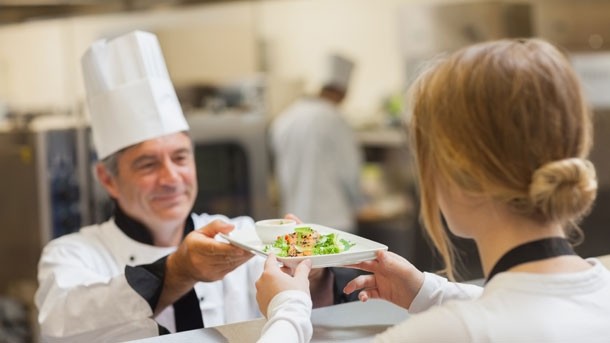ASK THE EXPERTS
How to improve communication between front and back-of-house

Solid communication between customers, front-of-house staff and those in the kitchen is essential for the smooth running of any restaurant or pub, but what are the best ways to ensure that happens?
1: Deliver a genuine, warm welcome
If you want to deliver the ultimate experience for your guests through every part of the customer journey, don’t ignore them when they walk through the door. Believe me they will have judged you in less than five seconds if you don’t acknowledge them when they enter your restaurant.
If you don’t have a dedicated host, ensure you’ve allocated teams across front of house to keep an eager eye on the door to offer a warm welcome. It is important to deliver your brand standards, but no one wants to receive robotic service from a well-oiled script which is not in any way genuine – so keep it real.
2: Inform customers from the outset
There’s nothing that annoys customers more than having to wait for a table with no communication from front-of-house as to when that table will be available. They want to know from the outset how long it will be until their table is ready so that they have the choice to do something else until it is.
Operators shouldn’t be lulled into thinking it’s cool to have queues overflowing out the door, because if they don’t communicate with customers from the outset about wait times, they’ll simply head off to check out the competition
3: Find a way to manage waiting lists
Having staff manage wait lists on the door can be a hugely labour intensive and stressful exercise. The key is to utilise a solution that works hand-in-hand with front-of-house to enable them to do their job well, whilst at the same time ensuring you as an operator can cut unnecessary labour costs.
Guest management systems have the ability to deliver accurate wait times to customers, whilst also managing reservations and seating in-line with your restaurant floor plan. This ensures you’re more efficient with your labour costs, staff can increase table turns, which in turn will improve sales and raise customer satisfaction. However, no amount of technology can beat the personal touch. If you’ve got a queue of diners outside, be hospitable, take them drinks and a few tasty samples from your menu to wet their appetites for when ready to dine.
4: Don't forget the kitchen
Talk to any chef and you'll find their objectives are the same: They work hard to produce better quality food, deliver a quick and efficient service, improve service delivery times and reduce food waste. In addition, they strive to reduce stress in the kitchen so that they can focus on what they do well – cooking.
To strengthen front-of-house's communication with the kitchen, ensure the business has a good manager who has the skills to understand the many and varied stress points across both front and back-of-house and who can then communicate effectively to deliver the objectives of both.
When launching a new menu, give both front and back-of-house the opportunity to showcase their skills. Ask chefs to present their dishes to the front-of-house team before front-of-house then present back to them with their intended presentation to customers.
5: Utilise technology
The benefit of using the latest technology is that it allows the kitchen to seamlessly integrate with front-of-house even more closely and efficiently than ever before.
An issue with the operation of many restaurants today is that so much of the communication is done by mouth or by paper, leaving room for unavoidable human error.
The beauty of technology across front and back of house is that it completely removes this issue. Not only does this mean happier customers, it also ensures a confident workforce who can concentrate on serving customers, rather than checking tickets, chasing orders or organising other team members.














